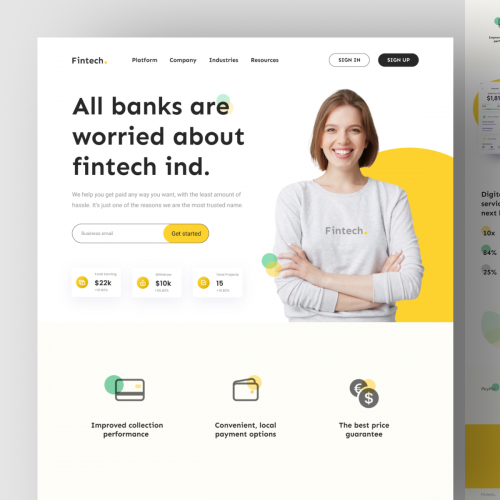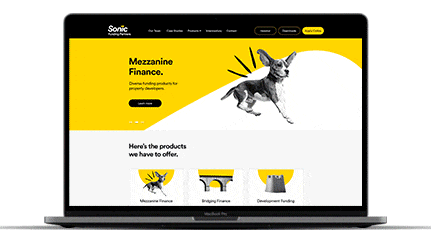Leading Tips for Producing an Impactful Site Design That Converts
To accomplish this, one need to think about a range of elements, including comprehending the target audience, prioritizing customer experience, and maximizing for mobile platforms. The critical usage of compelling call-to-actions and a distinct visual power structure plays an important role in directing individuals through their trip.

Understand Your Target Target Market
Understanding your target market is essential to reliable internet site layout, as it prepares for creating an appealing user experience. Identifying who your individuals are, including their demographics, preferences, and habits, enables developers to customize the web site's content, layout, and capability to fulfill specific requirements.
Performing complete marketing research is crucial in this procedure. Studies, interviews, and analytics can supply beneficial insights into user assumptions and discomfort points. By compiling this data, designers can produce individual personas that stand for different segments of the target market, making certain that design choices are notified and pertinent.
Moreover, understanding the target market assists in choosing ideal style elements such as color systems, typography, and imagery that resonate with individuals. A website that speaks directly to its target market promotes a feeling of link and depend on, urging longer brows through and greater conversion prices.
Eventually, a user-centered technique to site style not just improves user satisfaction however likewise supports service goals by driving involvement and commitment. By prioritizing the requirements and choices of the target audience, a web site can successfully offer its purpose and achieve wanted results.
Prioritize Individual Experience
To improve the general effectiveness of an internet site, focusing on user experience (UX) is important (Website Design). A properly designed UX guarantees that visitors can browse the website effortlessly, find details rapidly, and engage with content meaningfully. This results in raised user complete satisfaction and higher conversion prices
Begin by applying intuitive navigation. Menus ought to be logically structured, allowing individuals to find essential locations of the site with minimal initiative. Consistency in layout elements, such as shade systems and fonts, fosters knowledge, which is critical for preserving customer involvement.
Furthermore, think about the loading speed of your site. A hold-up of just a few seconds can bring about considerable drop-offs, as customers are much less likely to await a slow-loading page. Streamlining photos and maximizing code can boost performance and keep visitors.
Furthermore, quality in content discussion is vital. Use succinct, appealing language and separate text with visuals to boost readability. By prioritizing customer experience, you not only develop an extra satisfying setting for visitors however likewise strengthen your brand name's reputation. Inevitably, a focus on UX is an investment in the long-lasting success of your website.
Optimize for Mobile Tools
Maximizing for mobile phones is essential in today's electronic landscape, where a boosting number of users access sites through smartphones and tablet computers. A mobile-friendly layout not just boosts user experience however also plays a substantial duty in enhancing internet search engine positions. To attain this, it is necessary to adopt a responsive layout that automatically adapts to different screen sizes and positionings.

Packing rate is another critical factor; mobile customers are commonly less individual and anticipate rapid accessibility to details. By focusing on mobile optimization, you guarantee that your site continues to be affordable and successfully involves a wider target market.
Usage Compelling Call-to-Actions
An internet site's efficiency often hinges on its capability to direct visitors toward preferred activities, making compelling call-to-actions (CTAs) essential elements of style. CTAs offer as the crucial factors that guide customers to involve with the site, whether that means making a purchase, authorizing up for an e-newsletter, or downloading and install a resource.
To develop effective CTAs, quality is paramount. Use succinct language that plainly connects the action you desire the individual to take. Expressions such as "Start," "Join Free," or "Store Now" not just convey necessity yet likewise remove obscurity. The positioning of CTAs is just as important; they need to be strategically placed throughout the website to guarantee they are conveniently noticeable, specifically in high-traffic locations.
Furthermore, the design of CTAs must attract attention without being noticeable. Use contrasting shades and clear font styles to ensure they capture interest. Additionally, consider utilizing directional cues, such as arrows or images, to lead users towards these buttons. By concentrating on these aspects, organizations can dramatically their explanation enhance individual engagement, driving conversions and ultimately attaining their web site's goals.
Concentrate On Visual Power Structure
Effective website design relies heavily on a well-structured visual power structure that overviews individuals via web content effortlessly. By arranging aspects in a way that focuses on information, developers can enhance customer experience and promote decision-making. This includes making use of dimension, color, contrast, and spacing tactically to draw focus to one of the most critical parts of a webpage.
Making use of larger fonts for headings and subheadings establishes a important site clear difference in between different sections, permitting users to check content effortlessly. Furthermore, utilizing different colors for buttons and calls-to-action can record customer focus and motivate communication. Whitespace is one more crucial component; it avoids mess and allows customers to concentrate on key messages without disturbances.
Pictures and graphics ought to enhance the message while additionally sticking to the well established hierarchy, enhancing the total message (Website Design). Uniformity in layout components, such as color design and typography, further enhances the visual power structure, making navigating user-friendly

Conclusion
In conclusion, reliable web site design requires a thorough understanding of the target audience, prioritization of individual experience, and mobile optimization. The calculated use engaging call-to-actions and a distinct aesthetic hierarchy even more improves individual engagement. By applying these principles, internet sites can attain greater conversion prices, making certain that style aspects not just draw in site visitors but additionally facilitate smooth navigation and communication. Inevitably, a well-executed internet site layout functions as an important component in driving customer actions and attaining organization goals.